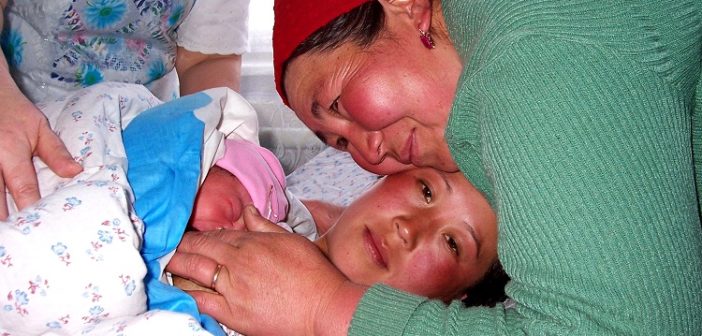Recently Sixth Sense reported that Shanghai hospitals lack pediatricians, highlighting the dilemma from the physician’s perspective. In their article, we are told of all the reasons why young graduates avoid the pediatrics departments of public hospitals, or quit shortly after joining. The main causes being: low salaries, overtime hours (to compensate for low salaries), the large daily influx of patients that causes doctors to have a tight schedule and short window for diagnosis, and the physical violence directed at pediatricians when their diagnosis is wrong or insufficient.
It would appear as if there are actually only two problems: 1) pediatricians in public hospitals feel they’re underpaid, and 2) Chinese families with only one child give pediatricians too much pressure. All the other problems are self-caused or stem from the hospital’s business model.
Pediatricians feel they need to work 10-12 hour shifts in order to make as much money as the doctors in other departments. The interviewee, Dr. Huiju Yu, counts how many patients she can see in a morning (36), taking no breaks as to squeeze in more because, as the article mentions, this hospital gives an extra monetary incentive per patient. Sixth Sense attributes this as a normal workload for a Chinese doctor (in a public hospital). As a result, the doctors can’t afford to spend too much time on each patient and have to make a quick diagnosis for each child they see based on the limited knowledge they can gauge from the short visit and their experience.
Dr. Yu also states that her office has no chairs because families ask too many questions when given the opportunity to rest. She doesn’t care that those families probably trekked from the countryside, waited outside the hospital at the crack of dawn for a number, and then stood around waiting in endless lines, as is customary in public hospitals. Dissatisfied parents, grandparents, and relatives then attack pediatricians who fail to help their child, sometimes resorting to physical violence. This phenomenon is attributed to the ignorance of the parents rather than the negligence of the doctors.
2014 Study by Wei Xu and Shu-Cheng Zhang
What the article fails to mention is the fact that none of the statistics it lists are new. In fact, they all stem from a 2014 study on the malaise state of affairs for public hospital pediatricians, quoting a 200,000 deficit since 2012. At the same time, the National Association of Pediatricians estimated that it would take five years to train 5,000 practicing pediatricians. Not only has the government been well-aware that the pediatrics department lacks takers, but it has also been common knowledge that many Chinese hospitals have had to shut down their pediatrics departments when they couldn’t find staff to run it. In fact, according to a 2013 study, China only has 68 specialized children’s hospitals, where most are located in first or second tier cities. Only sixty eight specialized hospitals catering to 20% of the population? It’s no wonder families flock to major cities for pediatric care, leading to long wait times, lines, and short visits.
In fact, according to Pediatric Society of the Chinese Medical Doctor Association (PS-CMDA), Beijing Children’s Hospital (BCH) can see up to 4,000 outpatient visits in a busy day. BCH has about 40-50 pediatricians, and each can see about 80-100 patients a day, up to 150 patients in a day if necessary. One has to wonder, does the problem only lay with the deficit, or with the structure of Chinese public hospitals in general.
Two-child Policy Baby Boom
As the government prepares to sell more baby gear and improve its labor force by introducing a two-child policy, it has made questionable moves to increase interest in pediatric training. The Ministry of Education has closed all pediatrics departments at the undergraduate level, leaving the training for the graduate level. Since interest for the department has dropped ever since, the solution has been to lower the threshold for pediatrics compared to other medical departments. In practice, what this means is that less-than-stellar university students are applying for pediatrics, and the exam is open to any medical student who has failed the general, or other, medical exams. What’s worse, whether they pass the pediatrics exam and obtain their licenses is based on the combined score of the two exams. The only other medical department with such low standards is the emergency department (ER).
What all this data tells us is that China has had a deficit for a while, has made moves to reduce the deficit by encouraging students to choose pediatrics as a career (though questionably), and still has an ever-widening deficit. Pediatricians are underpaid in a salary market where hospitals pay doctors based on the number of tests, equipment, and medication they can sell to patients and consultations start at RMB 10 per visit.
As 90 million women have become eligible for a second child this year, even as 60% will not choose to have one, certain provinces have made changes to accommodate the anticipated “baby boom”. Guangzhou has offered hospitals subsidies, begun building pediatric hospitals, and encouraged universities to train more pediatricians. Dalian, provincial capital of Liaoning, will hire pediatricians from abroad and train at least 300 more pediatricians by 2019. Now we’re just waiting for Beijing local government’s response to the existing deficit, lacking training, and upcoming baby boom.
Photo: Nazgul Abazbekova




